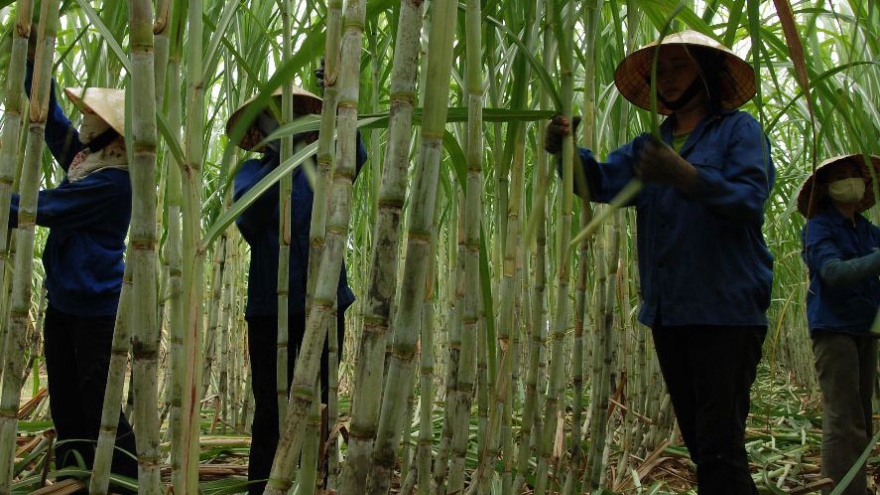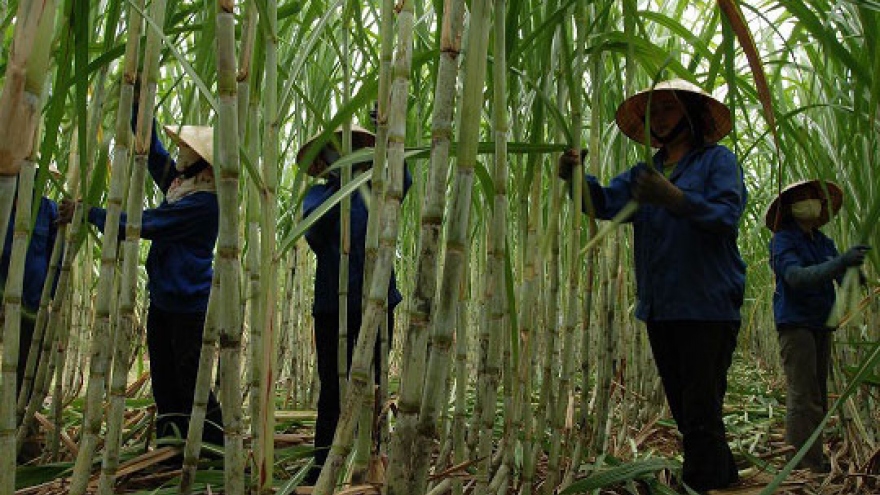Sugarcane yields, quality declines
Drought and saline intrusion this year caused a drop in the cultivation area and yield of sugarcane in the 2015-16 season, but farmers nationwide reaped profits from their harvests, though sugar quality was still considered insufficient.
 |
The Cuu Long (Mekong) Delta produces a high yield of sugarcane, but it is of low quality, according to Vinh.
The area of sugarcane affected by drought and salt-water intrusion, especially in the Mekong Delta, is expected to yield a lower output and quality in the next harvest, according to the Ministry of Agriculture and Rural Development’s (MARD) Department of Processing and Trade for Agro-Forestry-Fisheries Products and Salt Production.
MARD has asked sugar mills to work with local authorities to devise rezoning plans for cultivation areas, which are usually located near sugar factories, and develop policies to support farmers.
MARD has also told localities and sugar mills to increase investment in sugarcane areas to increase yield and quality by at least 10 per cent to meet domestic demand.
Tran Thanh Nam, MARD deputy minister, said the rezoning of sugarcane areas played an important role in preventing sugar mills from fighting over raw sugarcane materials.
MARD is currently drafting a decree on the production and trade of sugarcane and sugar.
The degree will regulate sugarcane zones, support mechanisation in farming, and establish large-scale sugarcane fields, according to Nam.
Vu Thi Huyen Duc, general director of Sugarcane and Sugar Corporation No 1, said that better zoning for cultivation areas in the Mekong Delta was needed to stabilise sugarcane input for sugar mills.
More than 284,300ha of sugarcane was planted in the 2015-16 sugarcane season, down 22,000ha against the 2014-15 sugarcane season, according to MARD. The yield was 64.4 tonnes per ha, down 0.9 tonnes.
The price of sugarcane with 10CCS (commercial content sugar) purchased at fields was VND850,000-950,000 per tonne, up about VND100,000-150,000 against the price in the 2014-15 sugarcane season.
The 41 sugar mills in the country bought all the sugarcane harvested in the 2015-16 season, producing more than 1.23 million tonnes of sugar, down 180,500 tonnes against the 2014-15 season.
The 2016-17 sugarcane season harvest begins in a few months. During this time, the country’s sugar mills plan to produce about 1.5 million tonnes of sugar, equal to the 2015-16 season.
The sugar mills have also signed contracts with farmers to invest in sugarcane fields and guarantee outlets for farmers cultivating 239,100ha in the 2016-17 sugarcane season, up by 1,630ha compared to the 2015-16 season.



